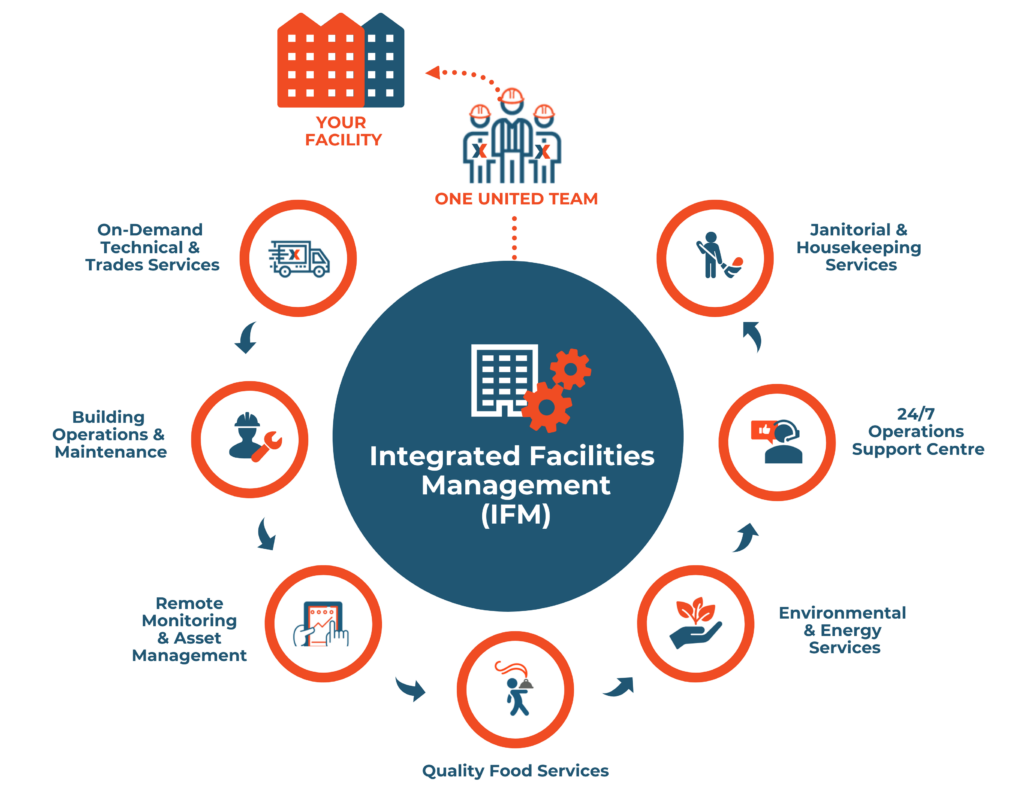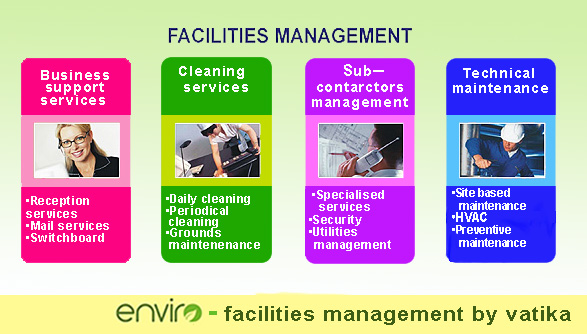The Necessary Overview to Facility Monitoring: Techniques for Success
Facility administration plays an important duty in the general success of an organization, offering as the foundation that sustains security, effectiveness, and performance. The nuances of efficient center management prolong beyond plain logistics and require a detailed understanding of both qualitative and quantitative metrics.
Understanding Facility Administration
What makes up efficient facility monitoring? Efficient center management incorporates the coordination of various organizational functions to make certain that developed atmospheres are safe, effective, and conducive to productivity. Facility Management. It integrates the principles of design, architecture, and organization management to develop a seamless functional circulation within a company
Crucial element of facility monitoring consist of area planning, maintenance administration, and conformity with health and wellness laws. Room preparation focuses on maximizing using physical sources to sustain organizational objectives, while maintenance monitoring makes sure that facilities are maintained in optimal problem, optimizing lifespan and reducing functional costs. Compliance with regulative and legal standards is vital, as it safeguards the organization versus possible responsibilities and boosts its reputation.
In addition, effective facility administration depends on the tactical use of innovation, such as Structure Monitoring Equipment (BMS) and Computer-Aided Center Administration (CAFM) devices. These modern technologies help with real-time tracking of building systems and improve maintenance procedures. Inevitably, an extensive strategy to facility management not just advertises functional performance but additionally cultivates a favorable setting for employees and visitors alike, driving total business success.
Trick Strategies for Optimization
Maximizing center monitoring requires a critical approach that lines up operational techniques with organizational objectives. To accomplish this, the initial crucial approach is the implementation of incorporated technical services. Utilizing innovative software program systems permits real-time tracking of center operations, helping with data-driven decision-making and improving total effectiveness.
Secondly, routine assessments of center efficiency are vital. Carrying out regular examinations and audits enables facility managers to identify locations that need enhancement, making certain that sources are allocated successfully. This proactive method helps in minimizing downtime and boosting service distribution.
One more crucial approach is fostering partnership across departments. By encouraging open interaction between groups, facility supervisors can much better align their approaches with company objectives, bring about improved operational synergy. Furthermore, engaging staff in training programs advertises a society of responsibility and enhances their capacity to add to optimization efforts.
Enhancing Safety Procedures
Strengthening security methods is necessary for developing a safe and secure atmosphere within facilities. A comprehensive security protocol not only secures employees and visitors yet likewise improves operational effectiveness. To attain this, facility supervisors should perform regular danger analyses to identify prospective dangers and ensure that ideal procedures are in area.
Training and education are essential elements of reliable security protocols - Facility Management. Workers ought to receive ongoing training in emergency procedures, devices handling, and personal protective measures. Normal drills, such as fire discharges or lockdown treatments, foster knowledge and preparedness among staff
Furthermore, clear interaction channels have to be established to report safety problems promptly. This includes creating an accessible platform for staff members to articulate prospective dangers or events without worry of . Leveraging modern technology can boost security measures; for example, applying security systems and gain access to controls aids keep track of center activities and limit unauthorized access.
Last but not least, compliance with neighborhood guidelines and market requirements is non-negotiable. Routine audits and reviews of security protocols make sure placement with current legislations and finest methods. By focusing on these strategies, facility supervisors can cultivate a society of safety that safeguards all stakeholders and eventually adds to the organization's success.
Improving Office Environment

Ergonomic factors to consider are vital to minimize physical strain and pain. Facility Management. This entails providing adjustable furniture, proper lights, and sufficient room for motion. These modifications can lead to lowered absence and enhanced work contentment
Visual appeals play a vital duty fit the workplace ambience. Using color psychology, all-natural lighting, and plant can foster a inviting and stimulating setting. Attentively made areas can improve imagination and enhance total health.
Furthermore, motivating worker engagement through inclusive decision-making processes can boost the feeling of ownership and belonging. Gathering feedback on workplace renovations and entailing employees in the style process can cause a more customized environment that satisfies their requirements.
Lastly, promoting health initiatives, such as health get redirected here cares and relaxation areas, can even more add to a helpful work environment culture. By concentrating on these methods, center managers can successfully boost the workplace setting, driving both employee fulfillment and business success.
Measuring Success in Facilities
Measuring success in facility monitoring needs a thorough approach that assesses both measurable and qualitative metrics. Quantitative metrics commonly include vital performance indications (KPIs) such as room utilization prices, power consumption, upkeep prices, wikipedia reference and occupancy levels. These metrics offer a clear image of functional performance and financial efficiency, permitting center managers to recognize locations for renovation and standard versus market criteria.
Qualitative metrics, on the other hand, focus on user complete satisfaction and worker interaction. Studies and responses devices can gauge exactly how well the centers fulfill the demands of occupants, helping to assess the total workplace environment. This facet is essential, as a satisfied workforce is often connected to increased productivity and retention prices.
To properly determine success, facility managers ought to likewise think about integrating technology, such as developing administration systems and data analytics devices, to collect and evaluate relevant data. Frequently evaluating both sets of metrics enables a much more balanced view of performance and educates tactical decisions. Inevitably, a successful facility management strategy rests on a commitment to continual enhancement, making sure that both functional effectiveness and individual contentment are prioritized.
Final Thought

Facility management plays a crucial duty in the overall success of a company, offering as the backbone that sustains productivity, efficiency, and safety and security.Secret aspects of center management include room planning, upkeep administration, and conformity with health and wellness and safety policies.Additionally, reliable facility administration counts on the calculated use of modern technology, such as Structure Management Systems (BMS) and Computer-Aided Facility Monitoring (CAFM) devices. Eventually, a thorough technique to center monitoring not just promotes functional efficiency however additionally fosters a positive atmosphere for workers and site visitors alike, driving total organizational success.
Ultimately, a successful facility monitoring approach pivots on a dedication to constant enhancement, guaranteeing that both functional performances and individual fulfillment are focused on.